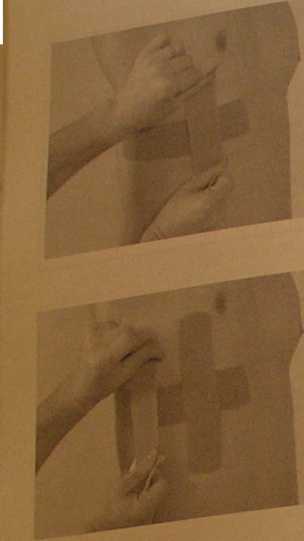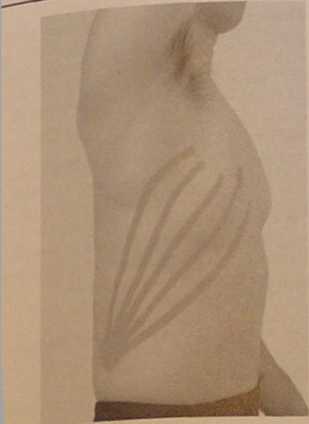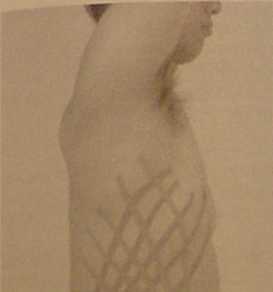P5140042

w
With the arm still in an abducted D niiddle of the paper backing of an ar?‘^ te. ineh Kinesio I stnp and apply 75-ioo^^Sat?^ tension. 00fa*ailJS
Apply one mechamcal correction słr-the suspected fracture or contusion siITP ward pressure.
Have the patient take in a fuli breath down the two ends of the Kinesio I Uy
tension. Pw‘thn0
With the arm still in an abducted poc-K middle of the paper backing of an app J*°n' M inch Kinesio I strip and apply 75-100 Jffptó
tension. Va«lab|,
Apply one mechamcal correction strip the suspected fracture or contusion site KjSr.
ward pressure. ffc§|
Have the patient take in a fuli breath ann down the two ends of the Kinesio I strip
tension.
euralgia is seen as severe sharp pałn along the course of the nerves located in the intercos-Inlercosta,^v ^jbit uself during cases of prolonged coughing.
Lj region- 11. * . Method will assist by reducing the edema and pain along the neural pathway. The [ The Kinesio ł? acjjust the specific tape application location due to patient symptoms.
Lditionerwiu


Treatment for inflammation is provided by applying two Kinesio lymphatic corrective tech-niques. For review see lymphatic corrective tech-nique.
Have the patient move into shoulder abduction and lateral bending of the spine. Begin by placing the first lymphatic Kinesio fan base approximately 3-4 inches posterior and superior to the posterior superior iliac spine. Angle the fan tails at a 45 degrees in a slightly superior and anterior direction. Kinesio fan strip is applied with 5-10%, paper off, tension.
The second lymphatic fans base is approximately 3-4 inches posterior and 6-8 inches superior to the posterior superior iliac spine. Have the patient move into abduction of the shoulder, lateral ending of t the spine and trunk rota tion to the side opposite the inflammation. Angle the fan tails at a 45 degrees in a slightly inferior and anterior direction.
The fan strips should form a crisscross pattem.
Completed application of the Kinesio Taping Method for intercostal neuralgia.
Wyszukiwarka
Podobne podstrony:
P5140061 T r the paper backing of the Kinesio I stip in the ‘ M the button holes and apply over eith
220 2 p. 02 # APF-220 17. Pin thc skir t to thc bodicc with the bodicc on top. Tuli up thc gathcrs t
497 on SWB. The analysis was conducted with the application of an ordered logit model. The dala used
13 AN UNPUBLISHED DOCUMENT AB OUT THE GREEK REYOLUTTON 733 In connection with the secret revolu
sa 15 F.xercise 13.—Triceps (Muscle at the Back of the Upper Arm) Stand with the anns down in front
decorated with engaged łonie columns, had a vaulted entrance from the south. A door jamb, still
287 SHORT NOTES together with the setbacks in hcr emotional life, turned that romantic girl into an
P5140010 "Fan" Strip Application The Fan Strip is applied with the patient in a stretched
P5140025 Cervical Spondylitis Cenical spondylitis is an inflammation of one or morę vertebrae in the
P5140062 Lymphedema ol Lymphedema of the upper extremity is the result of edema Ihat 9 " tion.
00100 ?e6667c29dfdea3c59f1657bb3f2b02 99 The OCAP manufacturing process remains in an unknown State
00232 ?9b1ac6d3646bcdf4e254edd2dae625 234 Baxley Choosing menu option #5 results in an individual a
więcej podobnych podstron